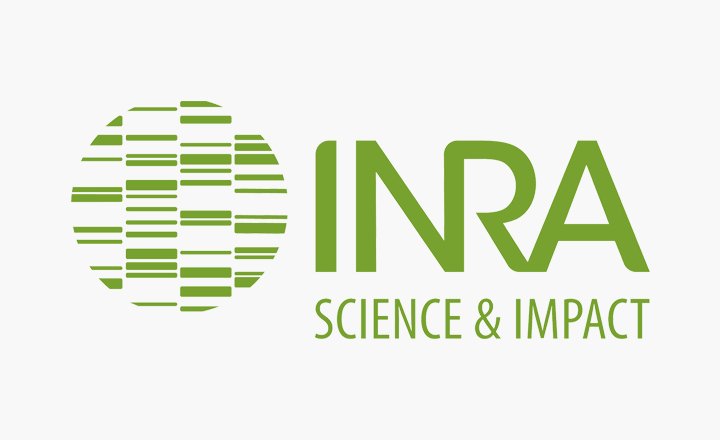
INRA optimizes the fleet of vehicles
A system that can be managed locally as well as nationally
The French Prime Minister Fillon send out a memo in 2010, which kicked off a thought process in all (semi) governmental institutions to reflect on the fleet of vehicles.. "This formed the basis for the INRA to carry out a study concerning the vehicle fleet. Guidelines had to be defined. In 2012, our study was converted to an action plan. Our objectives: comply with any regulations, reduce costs, optimize usage but take into account the needs of the organizations involved", says Pascal Valentin, Director for research of decentralised services. A detailed analysis helped to create the plan. "We saw that 60% of commercial vehicles were deployed outside the regulatory area and that some cars were only used for 2,000 km per year. Initially we found an average mileage 8.860 km per year. We have calculated that for optimal efficiency, this should become 11,500 km per year", details Pascal Valentin.
By early 2013, after approval of the plan by the board, INRA started looking for a management system. This was subject of a public procurement procedure in which the different options were compared.
Remember the person using the system
"Ultimately we found that a tandem of two products would give us everything we needed. It formed the right combination to exploit the fleet efficiently, and at the same time manage any use at the user level. This meant that these two packages had to be interfaced so information could flow freely from one syste, to another. We opted for AS-Tech Vehicle Fleet interfaced to the GIR booking system, " explains Pascal Valentin.
In 2014 the implementation and training of users team followed. "Our plans only work well when the users of the software are properly trained."
As-Tech Vehicle Fleet gave both local and national management access to information. At national level it is necessary to keep overview, with an occasional need to extraction data from the system. At the local level, the serparate INRA locations can carry out detailed work on how to deploy vehicles by understanding average price per mile, mileage, CO2 emissions, etc. In addition, toll or parking fees can be registered, and vehicles can even be followed from a technical point of view.
"Thanks to AS-TECH Vehicle Fleet we can handle the request for a car in minutes, both locally and nationally. By the click of a mouse-button, we get an overview on the entire fleet, It removes the need to go through mountains of information to get to the information we need. If we need more detailed information, then we simply create a filter. " mr Valentin adds.
As-TECH Vehicle Fleet as vector for the organization
The executive board gained insight by means of of annual reports, and can thus assure whether objectives have been met or not. Using the software any cost can be directly linked to any INRA (part) projects, which previously was not possible.
Clear advantage of this whole exercise was the introduction of clear tasks, limits and responsibilities. "This implementation has certainly had a structuring effect" states Mr. Valentin. "The introduction has raised awareness in the minds of managers. Within the system all needs are identified, so managers can focus to provide further professionalisation. All managers have clear targets. From an organization with decentralized initiatives - INRA has 17 regional centers-, we evolved to an environment where decisions can be taken centrally. The computer systems give exact information to the responsable personnel. This information serves as as a vector for further decisions."
One fleet, 150 locations
In 2009 the fleet of INRA included 1,275 vehicles. This has become 1.120, separated into 320 commercial vehicles and 800 passenger cars.369 agricultural vehicles were added, so the system currently manages a total of about 1.500 vehicles. This is 99% of the whole fleet.
Most INRA activity is carried out in the countryside. There are 17 regional centers with 150 locations. Small cars are used for travel between the different locations, the transport of mail and other items and passenger transport from and to public transport. Commercial vehicles and vans are mostly of the type Kangoo or Berlingo, which are used for carrying equipment for agricultural experiments and the transport of staff and machines. For distances larger than 100 km slightly larger passenger cars are available.
Pascal Valentin continues "Before this project, each location had a list of vehicles and tried there with tools like Excel spreadsheets to make the best of it. We were dependent on the same Excel sheets when making annual statistics. We had to use these sources to buy insurance, for example. In addition, each location handled it's own purchases to maintain these vehicles."
Gradual migration to central purchasing
"Starting from introduction the location manager makes all purchase decisions. We are gradually working to a stuation where the entire fleet is managed centrally" continues Mr. Valentin. The software supports this process by billing the use of vehicles to the different INRA departments: "Billing is done on basis of exact data present in the system. The cost of central purchases, can be separated into smaller invoices, based on the use. This way all users, departments and even projects can be told exactly what the cost was."
A final benefit was that the software helps the automatic tracking of regulations and policies. An example is the directive that 25% of the fleet has to be electric or hybrid vehicles. "To encourage this policy we have financed a replacement of 1 out of 2 vehicles in the car pool. We could subsidized vehicles with the amount of 5,500 EUR per unit: about half of what the central purchase department has to pay for such vehicles. We phase out a 120 vehicles each year, and buy 60 new ones to replace. This means a annual 5% decrease of the fleet", Mr. Valentin concludes.
translation of Frédéric Blin “Flottes Automobiles” - April 2015